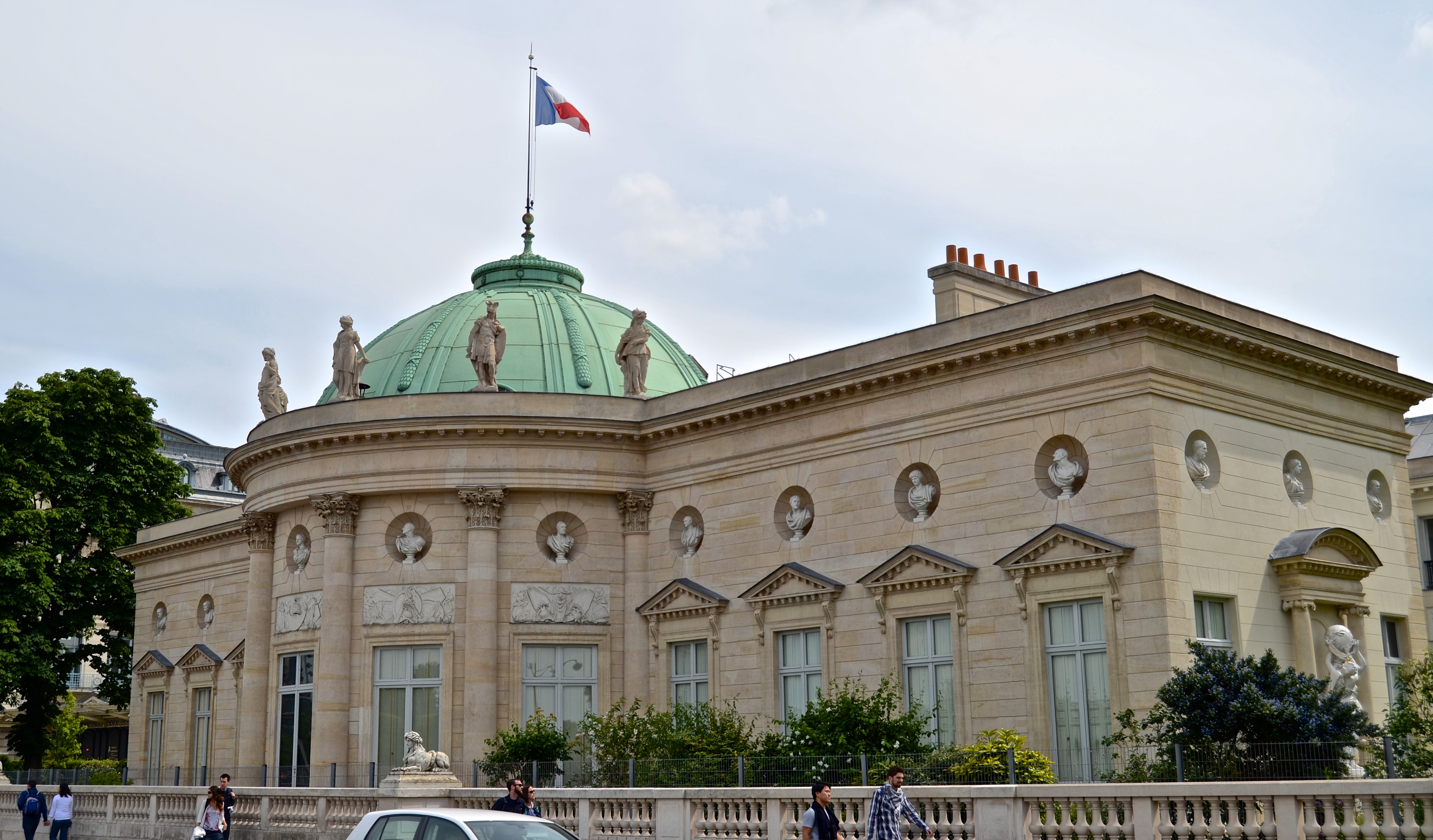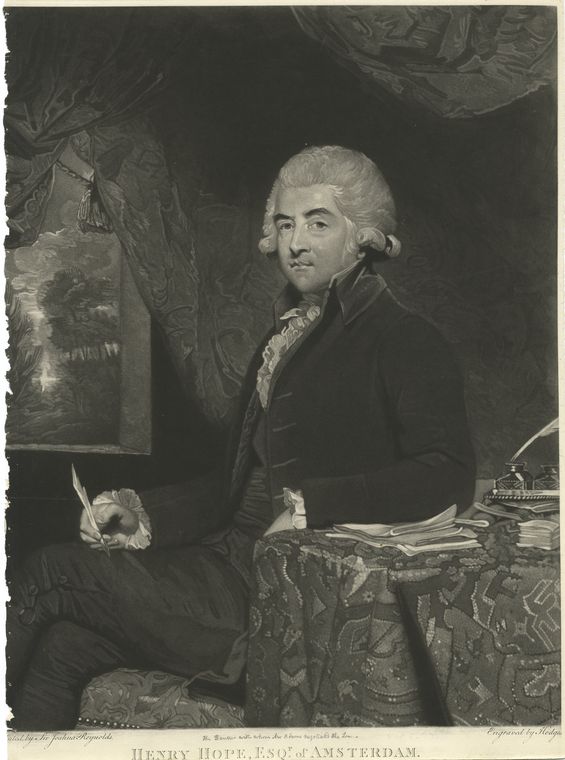|
Palais De La Légion D'Honneur
The Palais de la Légion d'honneur (French for "Palace of the Legion of Honour") is a historic building on the Left Bank of the River Seine in Paris, France. It houses the Musée de la Légion d'honneur ("Museum of the Legion of Honour") and is the seat of the Légion d'honneur, the highest French order of merit. The building is also known as the Hôtel de Salm. It is located at 64 rue de Lille, next to the old Orsay railway station (now the Musée d'Orsay) in the 7th arrondissement of Paris. History The original Hôtel de Salm was constructed between 1782 and 1787 by the architect Pierre Rousseau (1751–1810) for the German prince Frederick III, Prince of Salm-Kyrburg. The revolutionary government nationalised the building, and from 13 May 1804, it was renamed the "Palais de la Légion d'honneur" and became the seat of the newly created Légion d'honneur. The interior was remodeled for that purpose by Antoine-François Peyre, and new exterior sculptures were added by Je ... [...More Info...] [...Related Items...] OR: [Wikipedia] [Google] [Baidu] |
Antoine-François Peyre
Antoine-François Peyre (5 April 1739, in Paris – 7 February 1823, in Paris) was a French architect; the younger brother of Marie-Joseph Peyre, and the uncle of . Biography He won the Grand prix de l'Académie (later, the Prix de Rome) in 1762, eleven years after his brother, and went to stay at the Académie de France à Rome in 1766. There, he became close friends with a colleague, , and married his sister, Sophie. Upon his return, he was named an architect of the King's Buildings at Fontainebleau and Saint-Germain-en-Laye, where he created two convent chapels. In 1777, he was sent to Trier, to help Prince Clemens Wenceslaus of Saxony complete his Château in Koblenz. That same year, he entered the Académie Royale d'Architecture and later became a teacher there. His students included Charles Percier, Pierre-François-Léonard Fontaine, Antoine Vaudoyer and Louis-Pierre Baltard. In the 1780s, he completed the chapel at the charity hospital in Saint-Germain-en-Laye (s ... [...More Info...] [...Related Items...] OR: [Wikipedia] [Google] [Baidu] |
Rochefort-en-Yvelines
Rochefort-en-Yvelines is a commune in the Yvelines department, part of the Rambouillet in the Île-de-France in France. INSEE See also *Communes of the Yvelines department
An intentional community is a voluntary residential community which is designed to have a high degree of social cohesion and teamwork from the start. The members of an intentional community typically hold a common social, political, religi ...
References [...More Info...] [...Related Items...] OR: [Wikipedia] [Google] [Baidu] |
Villa Welgelegen
Villa Welgelegen is a historical building in Haarlem, the Netherlands, which currently houses the offices of the provincial executives of North Holland. Located at the north end of a public park in the city, it is an example of neoclassical architecture, designed by Abraham van der Hart and unusual for its style in the Netherlands. History It was built by Henry Hope of the famous family banking company Hope & Co. of Amsterdam, from 1785 to 1789 as a summer home to replace the already quite impressive structure that he purchased there in 1769. From 1769 onwards, Henry Hope purchased more and more adjoining land in order to fulfill the plans he had for a great palace and picture gallery. During the five-year period that the construction took place, it was the talk of the town. No one had seen such a large summer home. To give an impression of the size compared to his contemporaries, see the map from 1827 showing the size of Welgelegen and its gardens (that go much further south ... [...More Info...] [...Related Items...] OR: [Wikipedia] [Google] [Baidu] |
Henry Hope
Henry Hope (1735–1811) was an Amsterdam merchant banker born in Braintree, Massachusetts. He emigrated to the Netherlands to join the family business Hope & Co. at a young age. From 1779, Henry became the manager of Hope & Co. and he participated in the firm for about a third from 1782. He is considered to be as great a genius as his uncle Thomas Hope (1704-1779), Thomas Hope. In 1786 Adam Smith dedicated the fourth edition of his book ''The Wealth of Nations'' to Henry Hope in hopes of increasing his readership:Adam Smith, ''The Wealth of Nations'', 1895; Early years His father, Henry, was a Rotterdam merchant of Scottish lineage who left for the "new world" after experiencing financial difficulties in the economic bubble of 1720. Though born in Rotterdam, he was considered Scottish because his father and brothers were members of the Scottish Church in Rotterdam. Henry the elder settled near Boston and became a Freemason and merchant. When his son Henry the younger was 13, he ... [...More Info...] [...Related Items...] OR: [Wikipedia] [Google] [Baidu] |
Haarlem
Haarlem (; predecessor of ''Harlem'' in English) is a city and municipality in the Netherlands. It is the capital of the province of North Holland. Haarlem is situated at the northern edge of the Randstad, one of the most populated metropolitan areas in Europe; it is also part of the Amsterdam metropolitan area, being located about 15 km to the west of the core city of Amsterdam. Haarlem had a population of in . Haarlem was granted city status or '' stadsrechten'' in 1245, although the first city walls were not built until 1270. The modern city encompasses the former municipality of Schoten as well as parts that previously belonged to Bloemendaal and Heemstede. Apart from the city, the municipality of Haarlem also includes the western part of the village of Spaarndam. Newer sections of Spaarndam lie within the neighbouring municipality of Haarlemmermeer. Geography Haarlem is located on the river Spaarne, giving it its nickname 'Spaarnestad' (Spaarne city). It is sit ... [...More Info...] [...Related Items...] OR: [Wikipedia] [Google] [Baidu] |
San Francisco
San Francisco (; Spanish for " Saint Francis"), officially the City and County of San Francisco, is the commercial, financial, and cultural center of Northern California. The city proper is the fourth most populous in California and 17th most populous in the United States, with 815,201 residents as of 2021. It covers a land area of , at the end of the San Francisco Peninsula, making it the second most densely populated large U.S. city after New York City, and the fifth most densely populated U.S. county, behind only four of the five New York City boroughs. Among the 91 U.S. cities proper with over 250,000 residents, San Francisco was ranked first by per capita income (at $160,749) and sixth by aggregate income as of 2021. Colloquial nicknames for San Francisco include ''SF'', ''San Fran'', ''The '', ''Frisco'', and ''Baghdad by the Bay''. San Francisco and the surrounding San Francisco Bay Area are a global center of economic activity and the arts and sciences, spurre ... [...More Info...] [...Related Items...] OR: [Wikipedia] [Google] [Baidu] |
California Palace Of The Legion Of Honor
The Legion of Honor, formally known as the California Palace of the Legion of Honor, is an art museum in San Francisco, California. Located in Lincoln Park, the Legion of Honor is a component of the Fine Arts Museums of San Francisco, which also administers the de Young Museum. History The land on which the Legion of Honor stands was once the city-owned Golden Gate Cemetery, established in 1870 and closed in 1909. It held about 29,000 remains and included a Chinese burial ground and a Potter's field. The Legion of Honor was the gift of Alma de Bretteville Spreckels, wife of the sugar magnate and thoroughbred racehorse owner/breeder Adolph B. Spreckels. After some persuading, Alma convinced Adolph to fund a museum project. To acquire more art and financial support, Alma embarked on to Europe and was successful in requesting donations of fine art from the French government and from Queen Marie of Romania, who donated a replica of her Byzantine Golden Room. The buil ... [...More Info...] [...Related Items...] OR: [Wikipedia] [Google] [Baidu] |
Théodore Maillot
Théodore is the French version of the masculine given name Theodore. Given name * Théodore Caruelle d'Aligny (1798–1871), French landscape painter and engraver * Théodore Anne (1892–1917), French playwright, librettist, and novelist * Théodore Année (1810 – after 1865), French horticulturist * Théodore Jean Arcand (born 1934), Canadian diplomat * Théodore Aubanel (1829–1886), Provençal poet *Théodore Aubert (1878–1963), Swiss lawyer and writer * Théodore Bachelet (1820–1879), French historian and musicologist * Théodore Bainconneau (fl. 1920), French wrestler *Théodore Ballu (1817–1885), French architect *Théodore de Banville (1823–1891), French poet and writer * Théodore Baribeau (1870–1937), Quebec politician *Théodore Baron (1840–1899), Belgian painter *Théodore Barrière (1823–1877), French dramatist * Théodore Baudouin d'Aubigny (1780–1866), French playwright *Théodore de Bèze (1519–1605), French Protestant theologian *Théodore Bo ... [...More Info...] [...Related Items...] OR: [Wikipedia] [Google] [Baidu] |
Jean-Paul Laurens
Jean-Paul Laurens (; 28 March 1838 – 23 March 1921) was a French painter and sculptor, and one of the last major exponents of the French Academic style. Biography Laurens was born in Fourquevaux and was a pupil of Léon Cogniet and Alexandre Bida. Strongly anti-clerical and republican, his work was often on historical and religious themes, through which he sought to convey a message of opposition to monarchical and clerical oppression. His erudition and technical mastery were much admired in his time, but in later years his highly realistic technique, coupled to a theatrical ''mise-en-scène'', came to be regarded by some art-historians as overly didactic. More recently, however, his work has been re-evaluated as an important and original renewal of history painting, a genre of painting that was in decline during Laurens' lifetime. Laurens was commissioned to paint numerous public works by the French Third Republic, including the steel vault of the Paris City Hall, the ... [...More Info...] [...Related Items...] OR: [Wikipedia] [Google] [Baidu] |
Anastase Mortier
Anastase is a Basque feminine given name A given name (also known as a forename or first name) is the part of a personal name quoted in that identifies a person, potentially with a middle name as well, and differentiates that person from the other members of a group (typically a fa ... derived from the Ancient Greek name Anastasíā. It may refer to: Given names * Anastase Alfieri (1892 – 1971), Italian entomologist * Anastase Dragomir (1896–1966), Romanian inventor * Anastase Gasana (born 1950), Rwandan diplomat * Anastase Murekezi (born 1952), Rwandan politician * Anastase Shyaka, Rwandan academic and politician * Anastase Simu (1854-1935), Romanian art collector * Anastase Stolojan (1836– 1901), Romanian politician Middle names * Henri Joseph Anastase Perrotin (1845 – 1904), French astronomer Surnames * Roberta Anastase (born 1976), Romanian politician See also * Anastasie Notes {{given name, type=both Basque feminine given names Romanian masculine g ... [...More Info...] [...Related Items...] OR: [Wikipedia] [Google] [Baidu] |
Paris Commune
The Paris Commune (french: Commune de Paris, ) was a revolutionary government that seized power in Paris, the capital of France, from 18 March to 28 May 1871. During the Franco-Prussian War of 1870–71, the French National Guard had defended Paris, and working-class radicalism grew among its soldiers. Following the establishment of the Third Republic in September 1870 (under French chief executive Adolphe Thiers from February 1871) and the complete defeat of the French Army by the Germans by March 1871, soldiers of the National Guard seized control of the city on March 18. They killed two French army generals and refused to accept the authority of the Third Republic, instead attempting to establish an independent government. The Commune governed Paris for two months, establishing policies that tended toward a progressive, anti-religious system of social democracy, including the separation of church and state, self-policing, the remission of rent, the abolition of chil ... [...More Info...] [...Related Items...] OR: [Wikipedia] [Google] [Baidu] |





